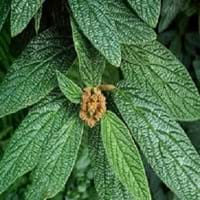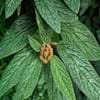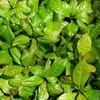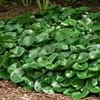Life Span
Perennial
Perennial
Type
Broadleaf Evergreen
Broadleaf Evergreen
Types
not available
Bigleaf hydrangea, Hortensia, Smooth hydrangea, Oakleaf hydrangea, Annabelle
Number of Varieties
Not Available
Habitat
Cold Regions
Forest edges, Hillside, Woods
USDA Hardiness Zone
5-8
6-10
AHS Heat Zone
Not Available
Not Available
Habit
Narrow Upright/Fastigiate
Oval/Rounded
Flower Color
White, Yellow
Purple
Flower Color Modifier
Bicolor
Bicolor
Fruit Color
Red, Black
Red
Leaf Color in Spring
Dark Green
Dark Green
Leaf Color in Summer
Dark Green
Dark Green
Leaf Color in Fall
Dark Green
Dark Green
Leaf Color in Winter
Gray Green, Dark Green
Dark Green
Leaf Shape
Lanceolate to elliptical
Oblovate
Plant Season
Spring, Summer, Fall
Spring, Summer, Fall, Winter
Sunlight
Partial Sun, Partial shade, Full Shade
Partial Sun, Partial shade, Full Shade
Type of Soil
Clay, Loam, Sand
Loam
The pH of Soil
Acidic, Neutral, Alkaline
Acidic, Neutral
Soil Drainage
Average
Well drained
Bloom Time
Late Spring
Spring
Tolerances
Light Frost
Pollution, Drought, Salt
Where to Plant?
Ground
Container, Ground
How to Plant?
Transplanting
Seedlings, Stem Planting
Plant Maintenance
Medium
Medium
Watering Requirements
Keep ground moist, Keep the Soil well drained
Not Available
In Summer
Lots of watering
Average Water
In Spring
Moderate
Moderate
In Winter
Average Water
Average Water
Soil pH
Acidic, Neutral, Alkaline
Acidic, Neutral
Soil Type
Clay, Loam, Sand
Loam
Soil Drainage Capacity
Average
Well drained
Sun Exposure
Partial Sun, Partial shade, Full Shade
Partial Sun, Partial shade, Full Shade
Pruning
Remove damaged leaves, Remove dead branches, Remove dead leaves
Remove damaged leaves, Remove dead branches, Remove dead leaves
Fertilizers
All-Purpose Liquid Fertilizer
All-Purpose Liquid Fertilizer
Pests and Diseases
Aphids, Beetles
Red blotch
Plant Tolerance
Light Frost
Pollution, Drought, Salt
Flowers
Showy
Insignificant
Flower Petal Number
Single
Single
Foliage Texture
Coarse
Medium
Foliage Sheen
Glossy
Glossy
Attracts
Birds, pollinators
Bees, Flies
Allergy
Toxic
Chest tightness, Diarrhea, Dizziness, Nausea, Vomiting
Aesthetic Uses
Farmland, Wild gardens
Not Available
Beauty Benefits
Not Available
Not Available
Edible Uses
No
Not Available
Environmental Uses
Air purification
Air purification
Medicinal Uses
No Medicinal Use
Fever, Kidney problems, Urinary tract problems
Part of Plant Used
Not Available
Flowers, Root
Other Uses
Acts as a natural source of rain water for birds and insects., Beneficial species for attracting pollinators
Not Available
Used As Indoor Plant
No
Not Available
Used As Outdoor Plant
Yes
Yes
Garden Design
Feature Plant, Foundation, Mixed Border, Screening, Wind Break
Container, Feature Plant, Foundation, Hedges, Houseplant, Mixed Border, Topiary, Bonsai, Espalier
Botanical Name
VIBURNUM rhytidophyllum
AUCUBA japonica f. longifolia 'Salicifolia'
Common Name
leatherleaf plant
Japanese Aucuba, Japanese Laurel, Willowleaf Japanese Laurel
In Hindi
Leatherleaf Viburnum
Hydrangea
In German
Runzelblättriger Schneeball
Hortensie
In French
Viburnum rhytidophyllum
Hortensia
In Spanish
Viburnum rhytidophyllum
Hortensia
In Greek
Viburnum rhytidophyllum
υδραγεία
In Portuguese
Kalina sztywnolistna
Hortênsia
In Polish
Kalina sztywnolistna
Hortensja
In Latin
leatherleaf viburnum
Hibiscus
Phylum
Magnoliophyta
Not Available
Class
Magnoliopsida
Not Available
Order
Dipsacales
Not Available
Family
Caprifoliaceae
Cornaceae
Genus
Viburnum
Not Available
Clade
Angiosperms, Asterids, Eudicots
Not Available
Tribe
Not Available
Not Available
Subfamily
Not Available
Not Available
Number of Species
Not Available
Not Available
Properties of Leatherleaf Viburnum and Japanese Aucuba
Wondering what are the properties of Leatherleaf Viburnum and Japanese Aucuba? We provide you with everything About Leatherleaf Viburnum and Japanese Aucuba. Leatherleaf Viburnum doesn't have thorns and Japanese Aucuba doesn't have thorns. Also Leatherleaf Viburnum does not have fragrant flowers. Leatherleaf Viburnum has allergic reactions like Toxic and Japanese Aucuba has allergic reactions like Toxic. Compare all the properties and characteristics of these two plants. Find out which of these plant can be used as indoor plant. If you are interested to decorate your house and garden, find out aesthetic uses, compare them and select the plant which will beautify your surrounding. Along with beautification, try comparing medicinal and edible uses of Leatherleaf Viburnum and Japanese Aucuba and you can choose the plant having best and most benefits.
Season and Care of Leatherleaf Viburnum and Japanese Aucuba
Season and care of Leatherleaf Viburnum and Japanese Aucuba is important to know. While considering everything about Leatherleaf Viburnum and Japanese Aucuba Care, growing season is an essential factor. Leatherleaf Viburnum season is Spring, Summer and Fall and Japanese Aucuba season is Spring, Summer and Fall. The type of soil for Leatherleaf Viburnum is Clay, Loam, Sand and for Japanese Aucuba is Loam while the PH of soil for Leatherleaf Viburnum is Acidic, Neutral, Alkaline and for Japanese Aucuba is Acidic, Neutral.
Leatherleaf Viburnum and Japanese Aucuba Physical Information
Leatherleaf Viburnum and Japanese Aucuba physical information is very important for comparison. Leatherleaf Viburnum height is 300.00 cm and width 300.00 cm whereas Japanese Aucuba height is 240.00 cm and width 150.00 cm. The color specification of Leatherleaf Viburnum and Japanese Aucuba are as follows:
Leatherleaf Viburnum flower color: White and Yellow
Leatherleaf Viburnum leaf color: Dark Green
Japanese Aucuba flower color: Purple
- Japanese Aucuba leaf color: Dark Green
Care of Leatherleaf Viburnum and Japanese Aucuba
Care of Leatherleaf Viburnum and Japanese Aucuba include pruning, fertilizers, watering etc. Leatherleaf Viburnum pruning is done Remove damaged leaves, Remove dead branches and Remove dead leaves and Japanese Aucuba pruning is done Remove damaged leaves, Remove dead branches and Remove dead leaves. In summer Leatherleaf Viburnum needs Lots of watering and in winter, it needs Average Water. Whereas, in summer Japanese Aucuba needs Average Water and in winter, it needs Average Water.




